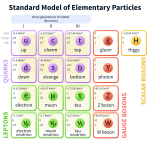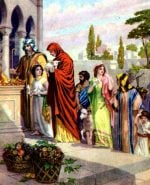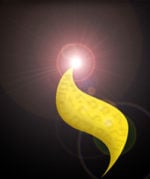
Sweetening Judgments by Entangling Divine Names
VeZot HaBerachah and the Hoshana Rabbah custom of striking the ground with willow twigs tl;dr Incense (ketoret) means “binding,” which we interpret as entanglement; the

VeZot HaBerachah and the Hoshana Rabbah custom of striking the ground with willow twigs tl;dr Incense (ketoret) means “binding,” which we interpret as entanglement; the

TL;DR: Ha’azinu’s warning about a “no-people” (b’lo-am) finds chilling relevance in the modern “Palestinian” identity—a political construct created in 1964 by the KGB and Arab
This week’s parashah is Ha’azinu—Moses’s final song, a duet between heaven and earth that asks creation itself to listen. “Give ear, O heavens… let the

Alexander Poltorak Abstract This essay addresses the anigmatic statement of the Jewish Sages, stating that G-d created this world with the letter Heh and the
Look forth from Thy holy habitation, from heaven, and bless Thy people Israel, and the land which Thou hast given us, as Thou didst swear
Philosophers struggled with the notion of time from the dawn of human civilization. Physicists of today declared the problem of time the number one problem

Ki Tavo And it shall come to pass, when the Lord thy God shall bring thee into the land whither thou goest to possess it,
In the proposed allegorical interpretation, the soldier in the war is a metaphor for the Jewish people, who are all “soldiers” in G‑d’s army Tzivot

Strings vibrate, Souls tremble, Angels are running and returning, G‑d is touching and not touching – The rhythms of the universe… Nothing stays still… all

The months of Tishrei is full of holidays, and they all share a common theme—the unification of time—past, present, and future. It all starts with
Listen, O heavens, and I will speak! And let the earth hear the words of my mouth! (Deut. 32:1) In this Torah portion Haazinu, Moses

If a bird’s nest chances before thee in the way, in any tree or on the ground, with fledglings or eggs, and the mother sitting
The Torah portion, Re’eh, talks about the Sabbatical Year—in Hebrew, Shemitah—the Seventh year. When the Sabbatical year comes, all loans are forgiven, and Jewish servants

The Torah portion Re’eh, begins with the verse: Behold, I set before you this day a blessing and a curse. (Deut. 11:26) The first word

Ye are standing this day all of you before the Lord your G‑d: your heads, your tribes, your elders, and your officers, even all the

…Thou shalt take of the first of all the fruit of the ground, which thou shalt bring in from thy land that the Lord thy
This post is a continuation and the conclusion of the previous post, THE FIFTH FORCE. Aside from the connection with the last week’s Torah portion,

Now, therefore, write ye this song for you, and teach thou it the children of Israel.” (Deut. 31:19) The four known fundamental forces are: gravitational

According to the Saadia Gaon, these two Torah portions – Nitzavim and Vayelech – are really one portion, which sometimes is split into two. In the
What came first, the Schrödinger cat or the fig of Rabbi Akiva? You be the judge. Today we present a guest post by Rabbi Dr. David

The mezuzah is one of the few miẓvot ([divine] “commandments”) for which the Torah states its reward. In this case, the reward is a long

In this Torah portion, Devarim (Deuteronomy 1-3), Moses recalls the travels through the Sinai desert when G‑d told him: Be not at enmity with Moab,
By the mouth of two witnesses, or three witnesses, shall the one liable to death be put to death; he shall not be put to